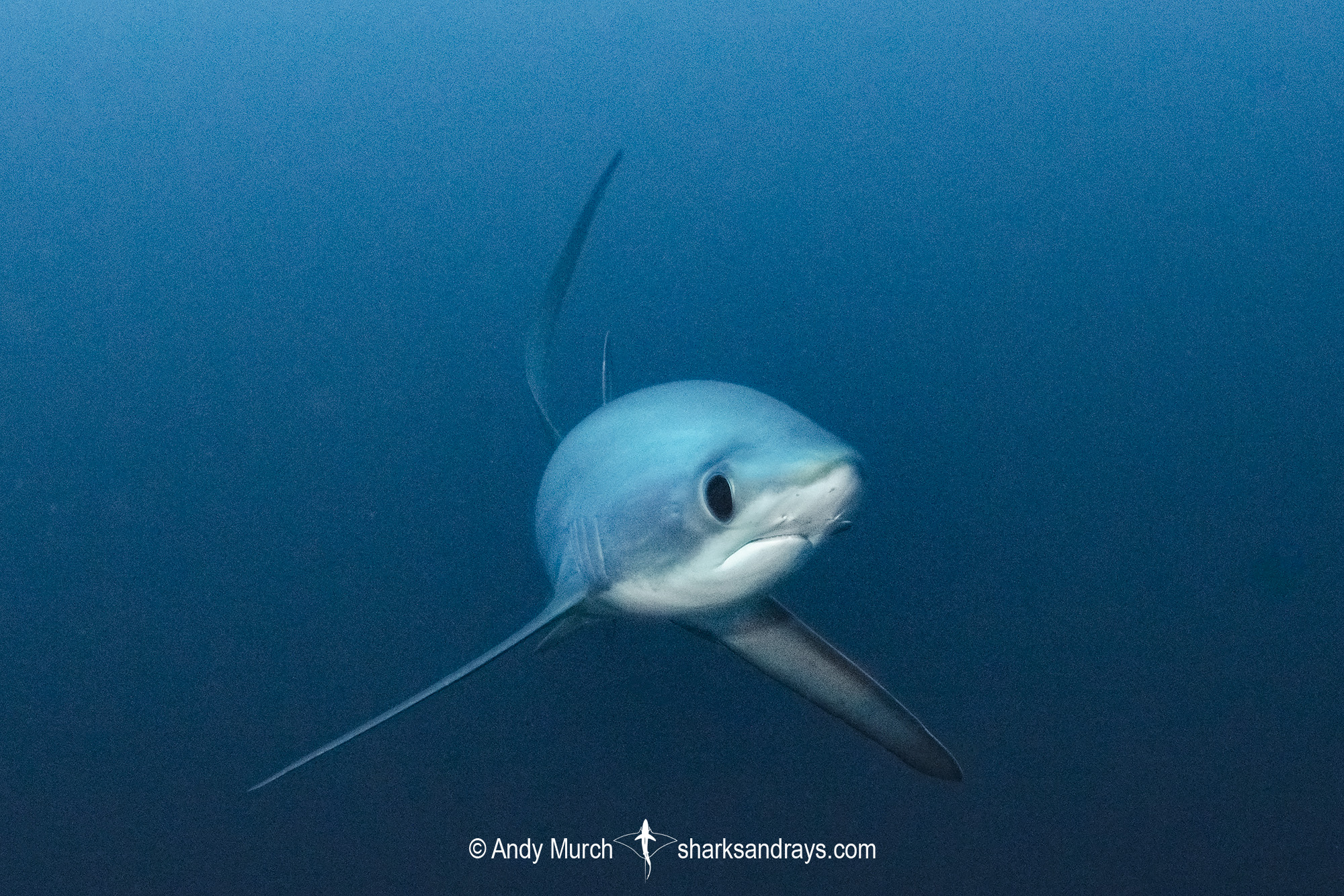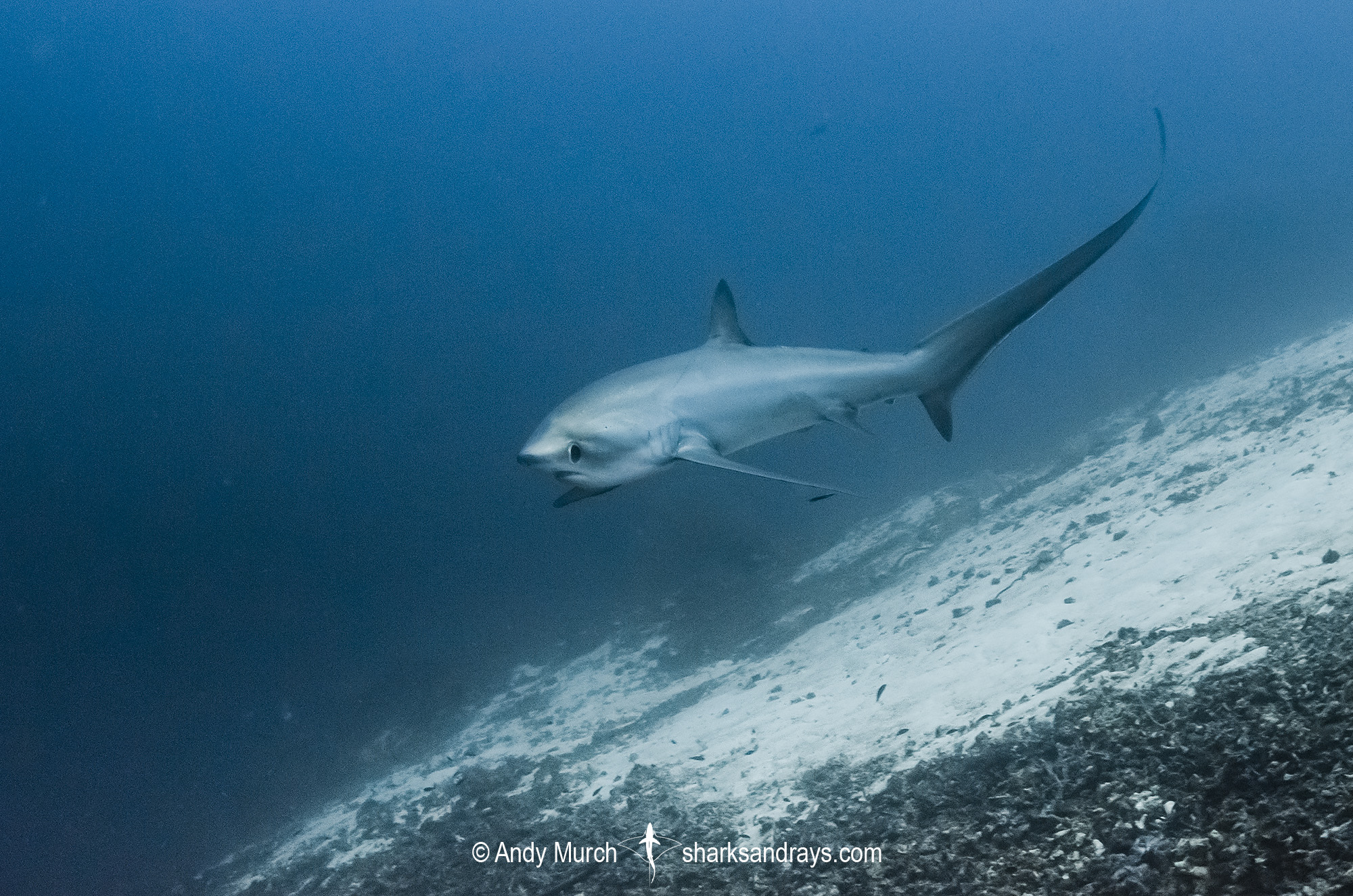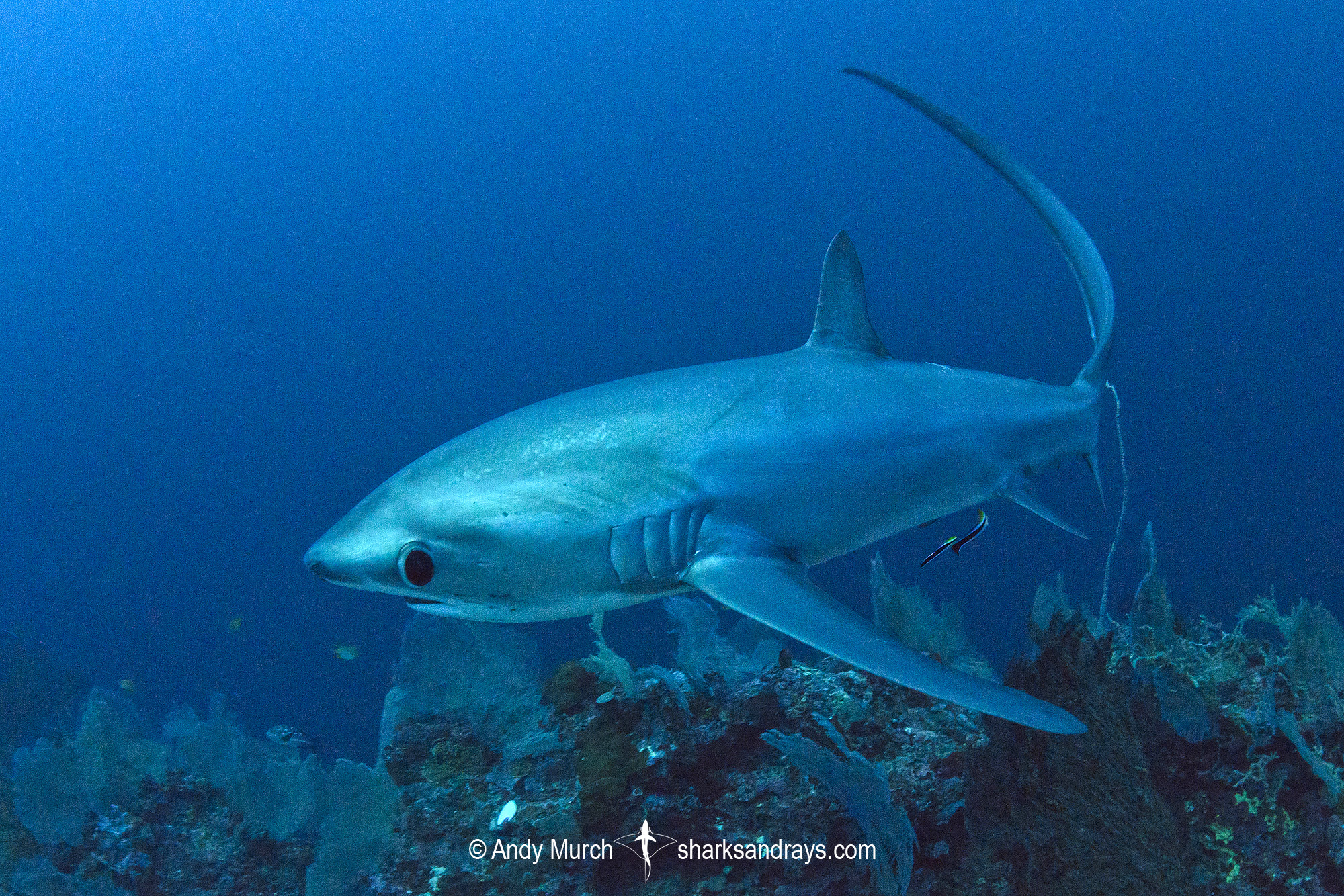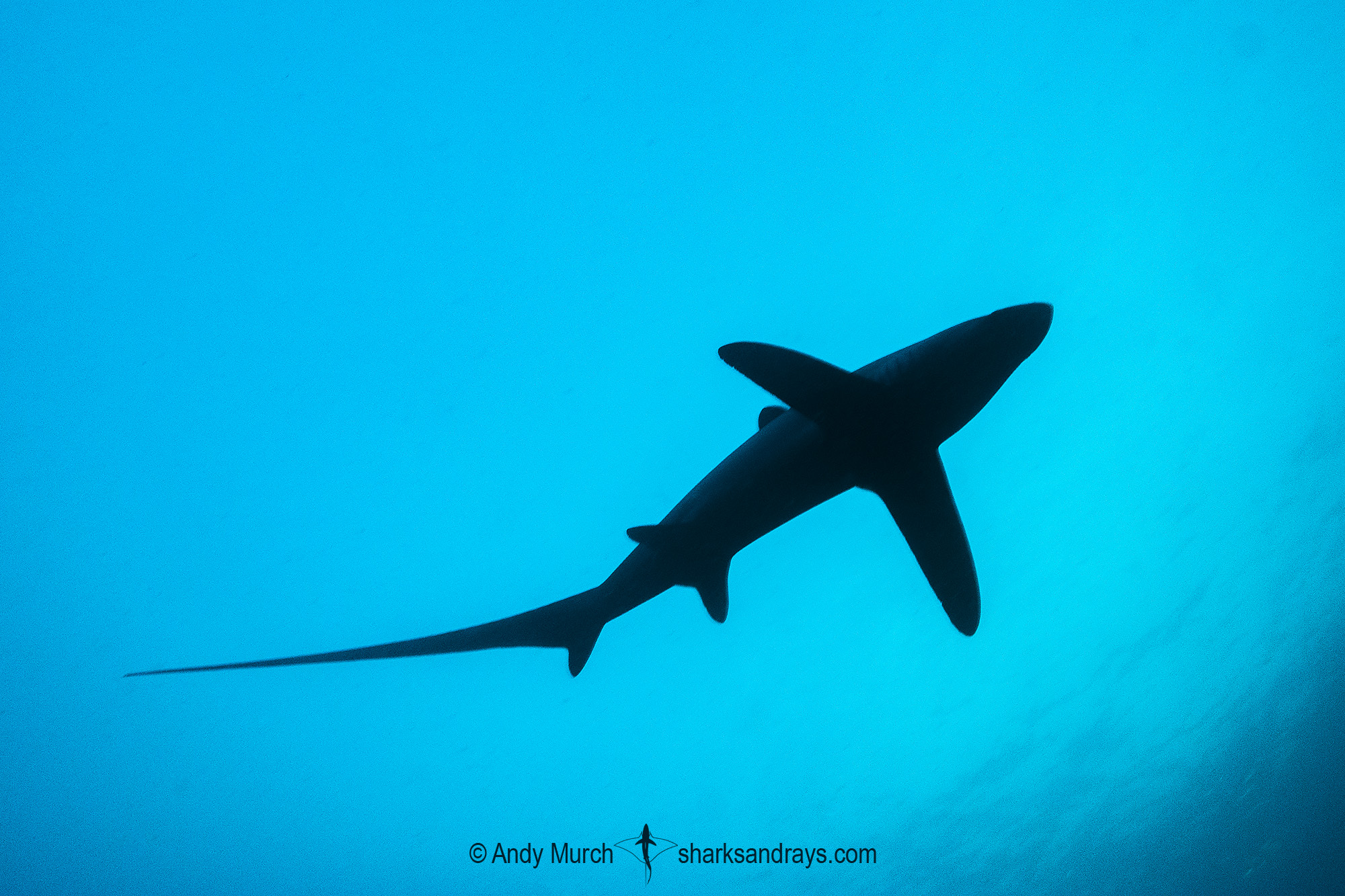Common names
Pelagic Thresher, Smalltooth Thresher, Fox Shark.
Binomial
Alopias pelagicus.
Synonyms
None.
Identification
Proportionately small head. Snout narrow, with a rounded tip. Labial furrows absent. Teeth very small. First dorsal fin relatively small. First dorsal origin posterior to pectoral fin free rear tip. Second dorsal fin very small. Second dorsal origin slightly posterior to pelvic fin free rear tip. Upper caudal lobe extremely long; almost as long as body.
Dorsal coloration metallic blue. Silvery on the flanks near the gills. Ventral coloration white.
Size
Maximum length 365cm. Size at birth 130-160cm.

Conservation Status
ENDANGERED
The Pelagic Thresher (Alopias pelagicus) is a target species and bycatch component in longline, purse seine, and gillnet fisheries. Where permitted, it is often retained for its meat and fins, but it is easily stressed and rarely survives the capture process. Combined with a slow reproductive rate and rampant unregulated fishing wwithin its range, the Pelagic Thresher population is estimated to have been reduced by 50–79% since the 1960s.
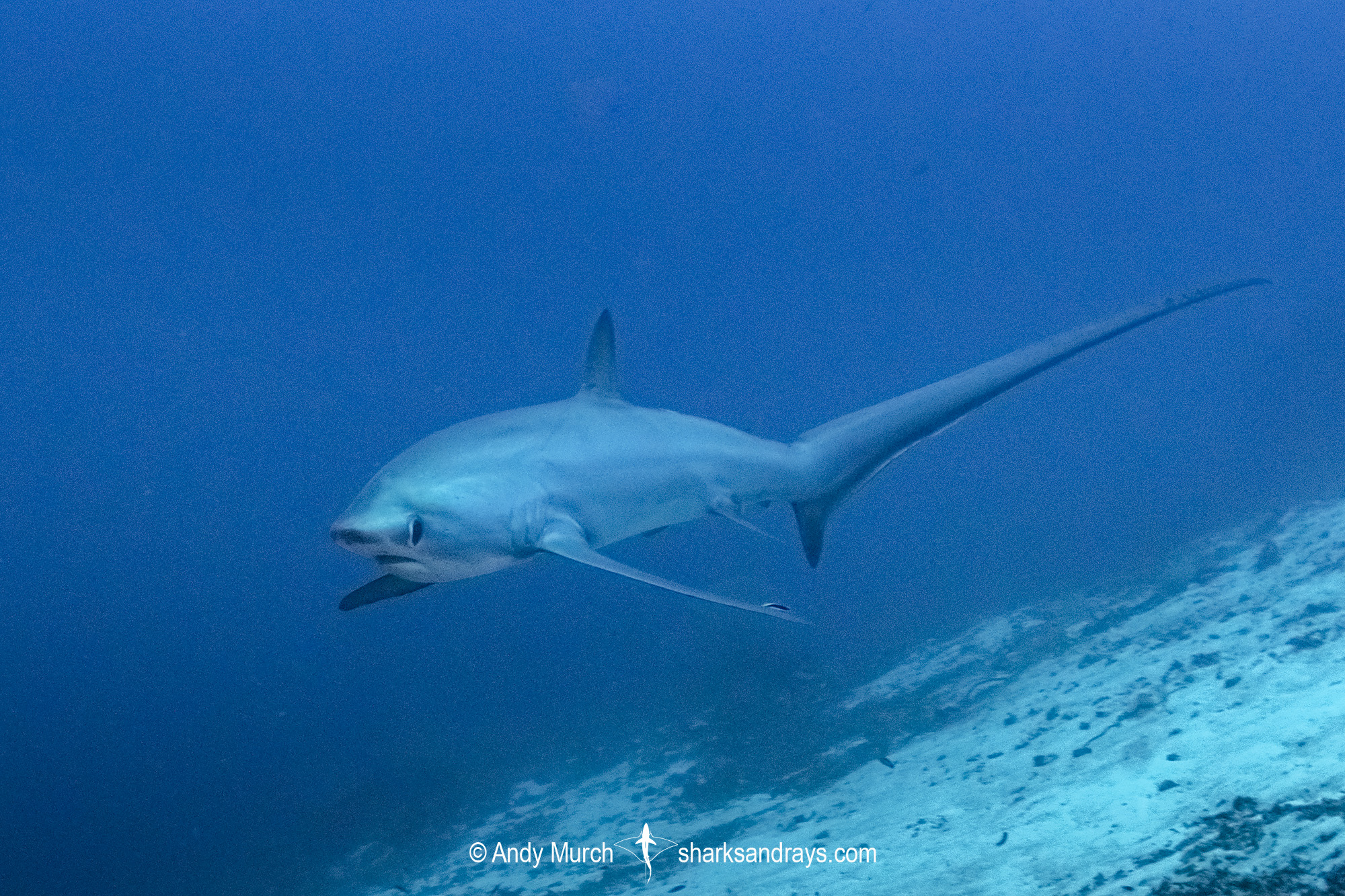
Habitat
Oceanic in tropical/sub-tropical seas and inshore. Surface to 300m.
Distribution
Resident throughout the warmer latitudes of the Pacific and Indian Oceans. Absent from the Atlantic.
Reproduction
An aplacental viviparous species with a very low reproductive ability i.e. 1-2 pups per litter. Developing embryos are oophagous; feeding on unfertilized eggs.
Diet
Poorly known. In the Sea of Cortez, pelagic threshers predate heavily on humboldt squid and clupeid fishes (small schooling bait fishes) which it catches by thrashing it’s long tail while swimming through schools.
Behavior
Migratory but its large-scale movements are poorly understood. Visits cleaning stations at offshore seamounts early in the morning but retreats before light levels increase. Known to breach, possibly to rid itself of parasites.
Reaction to divers
Very shy but will inadvertently approach divers hunkered down near cleaning stations if they stay quiet. Retreats quickly if camera flashes or lights are used. Will not respond to chum.
Diving logistics
Random sightings occasionally occur at offshore dive sites, but there are only two well known locations where pelagic thresher sharks are regularly seen.
By far the most reliable and productive place to see pelagic thresher sharks is at Monad Shoal near Malapascua in The Philippines. Monad Shoal is a deep, rocky/coral ledge a few kms in length that is dotted with cleaning stations. Just after dawn (and perhaps through the night) pelagic threshers swim up to the cleaning stations to rid themselves of parasites. Many dive boats drop divers at the cleaning stations to watch the sharks being cleaned. After an hour or two, the encounters dwindle. It is suspected this is because the threshers’ large eyes cannot tolerate high levels of sunlight.
To avoid spooking the light sensitive sharks, there is a ban on strobes and video lights at Monad Shoal.
The second spot for thresher shark sightings is at Daedalus, Brothers, and Elphinstone Reefs, off the coast of Egypt in the Red Sea. Week-long liveaboard dive trips visit these areas all year long but thresher sightings are hit and miss, and tend to be quite distant compared to the close up encounters that are possible in The Philippines.
What’s new
View our full list of updates
Similar species
Common Thresher Shark Distinguished by ragged countershading line, which does not reach base of pectoral fin.
Bigeye Thresher Shark Distinguished by much larger eye and deep grooves running horizontally from behind eye to above pectoral fin.

